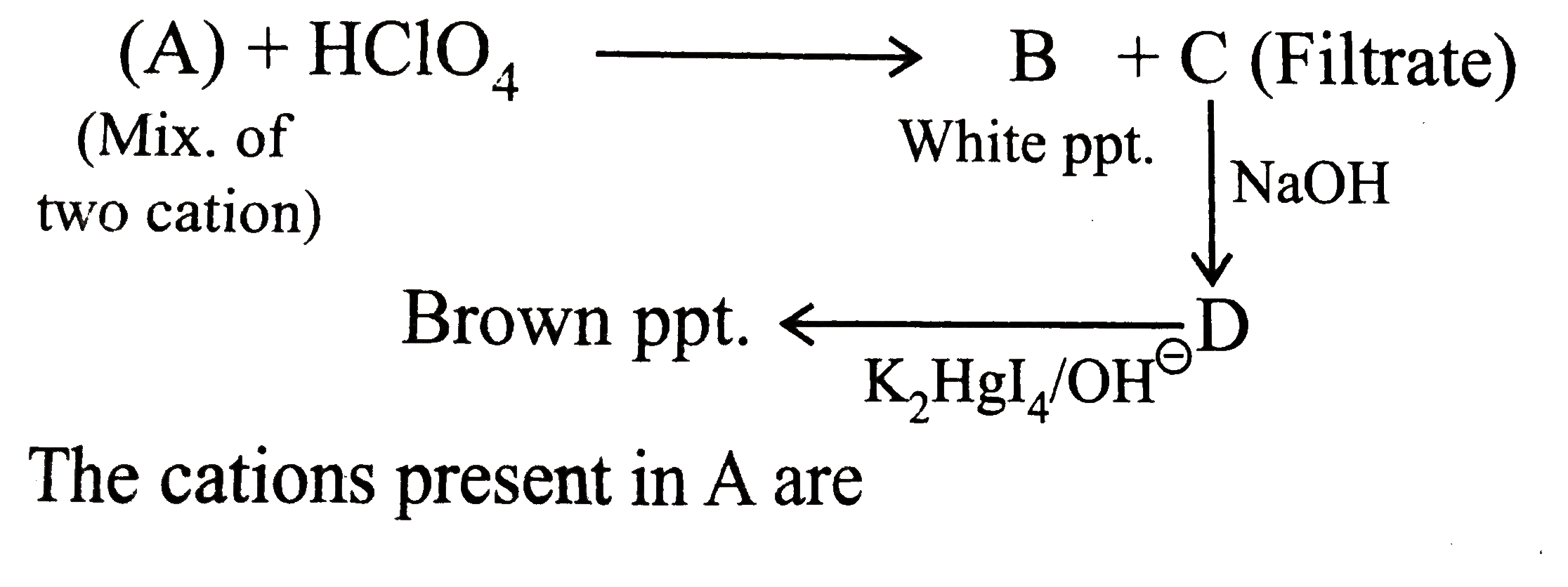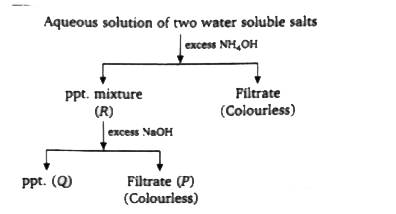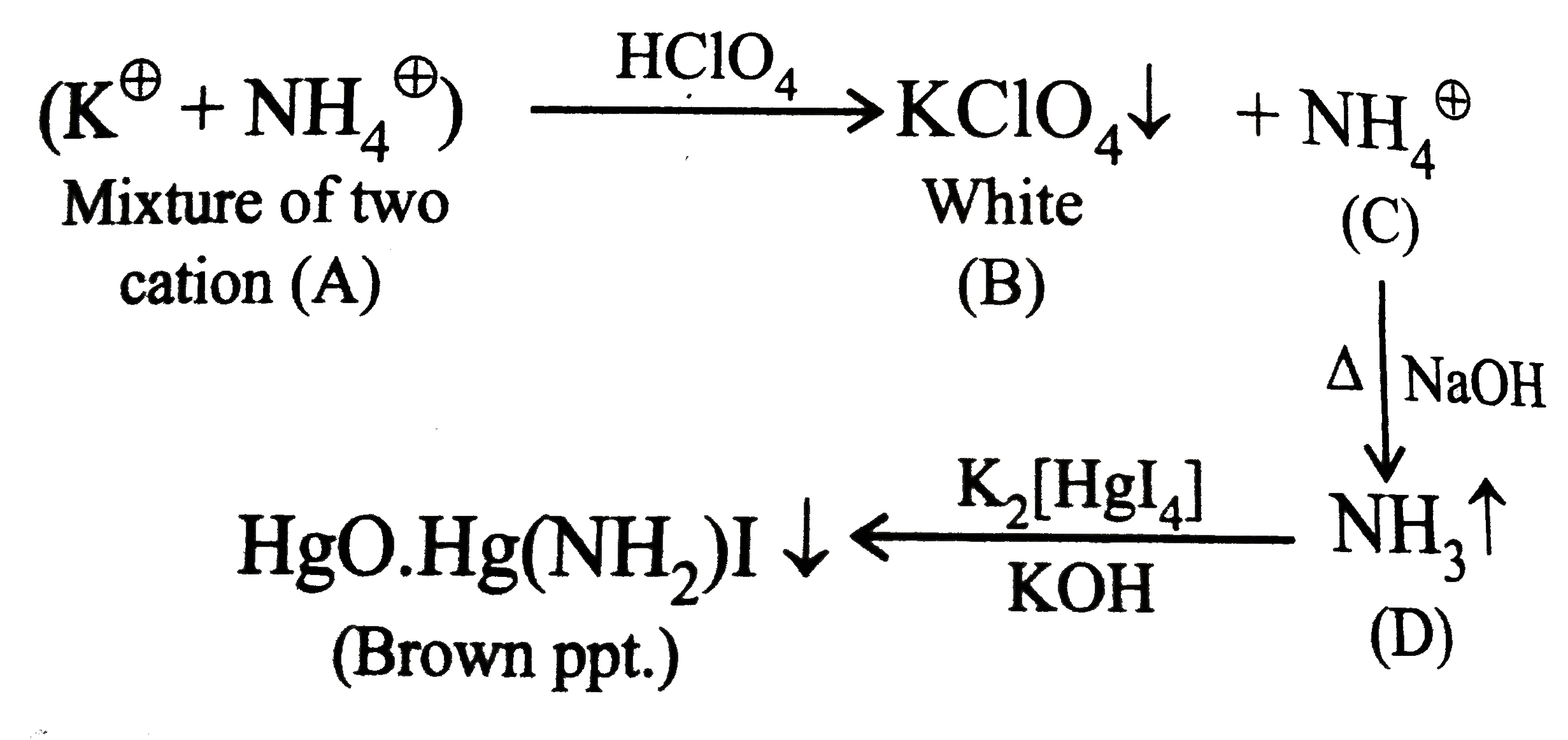
The cations present in A are
K⊕ and Na⊕
K⊕ and NH⊕4
NH⊕4 and Fe2+
(Mg)2+andNa⊕
The correct Answer is:b
Topper's Solved these Questions
- QUALITATIVE INORGANIC SALT ANALYSISBOOK - CENGAGE CHEMISTRYCHAPTER - QUALITATIVE INORGANIC SALT ANALYSISEXERCISE - Exercises (Single Correct) Part-D (Miscellaneous)
6 Videos
- QUALITATIVE INORGANIC SALT ANALYSISBOOK - CENGAGE CHEMISTRYCHAPTER - QUALITATIVE INORGANIC SALT ANALYSISEXERCISE - Exercises (Assertion-Reasion)
9 Videos
- QUALITATIVE INORGANIC SALT ANALYSISBOOK - CENGAGE CHEMISTRYCHAPTER - QUALITATIVE INORGANIC SALT ANALYSISEXERCISE - Exercises (Single Correct) Part-B(Dry Test)
10 Videos
- P-BLOCK GROUP 18 ELEMENTS - THE INERT GASESBOOK - CENGAGE CHEMISTRYCHAPTER - P-BLOCK GROUP 18 ELEMENTS - THE INERT GASESEXERCISE - Ex 5.1 (Objective)
14 Videos
- REDUCTION AND OXIDATION REACTION OF ORGANIC COMPOUNDSBOOK - CENGAGE CHEMISTRYCHAPTER - REDUCTION AND OXIDATION REACTION OF ORGANIC COMPOUNDSEXERCISE - SUBJECTIVE TYPE
3 Videos
Similar Questions
NH3 solution was added to four semple solution in difference test tube and found the following observation about the precipitate.
a. White ppt which is solution in oxcess of NH3 solution
b.On heating which is white in cold but yellow on heating
c. The cation present in (b) forms white ppt , with hypo solution which give black ppt on heating
d. The cation present in (c ) forms soluble complex with excess of NH3 solution
White ppts in (a),(b) and (c ) respectively obtained are
View SolutionIndicate the cations present in the following compounds :
(i) (NH4)2SO4 (ii) Ca(NO3)2
(iii) CH3COONa (iv)H2SO4
View Solution
Knowledge Check
Silver chloride dissolves in excess of ammonium hydroxide solution. The cation present in the resulting solution is
A[Ag(NH3)6]+B[Ag(NH3)4]+CAg+D[Ag(NH3)2]+A solution of a salt gives a precipitate on treatment with dilute HCl. The precipitate formed is filtered off and treated with NH3 whereby it turns black. The cation present in the salt is
AAg+BHg2+CHg2+2 and Cd2+DPb2+NH3 solution was added to four semple solution in difference test tube and found the following observation about the precipitate.
a. White ppt which is solution in oxcess of NH3 solution
b.On heating which is white in cold but yellow on heating
c. The cation present in (b) forms white ppt , with hypo solution which give black ppt on heating
d. The cation present in (c ) forms soluble complex with excess of NH3 solution
White ppts in (a),(b) and (c ) respectively obtained areAZn(OH)2,Zn(OH)2,HgOHg(NH2)NO3BCd(OH)2,Zn(OH)2,HgOHg(NH2)NO3CHgOHg(NH2)NO3Zn(OH)2,Cd(OH)2DAI(OH)2,Zn(OH)2,Pb(OH)2
Silver chloride dissolves in excess of NH4OH. The cation present in solution is.
View SolutionAq. Solution of

the cation(s) present in 'X' is/are:
View SolutionNH3 solution was added to four semple solution in difference test tube and found the following observation about the precipitate.
a. White ppt which is solution in oxcess of NH3 solution
b. On heating which is white in cold but yellow on heating
c. The cation present in (b) forms white ppt , with hypo solution which give black ppt on heating
d. The cation present in (c ) forms soluble complex with excess of NH3 solution
The solution initialy present in (a) +H2S (basic medium) gives ppt , then (a) may have
View Solution
Q. Precipitate (Q) was treated withdil. HCl and coloured solution was obtained. On passing H2S gas into this solution no precipitate was obtained but colour of the solution changes, then cation present in the precipitate (Q) can be identified by:
View SolutionSilver chloride dissolves in excess of NH4OH. The cation present in solution is.
View Solution

